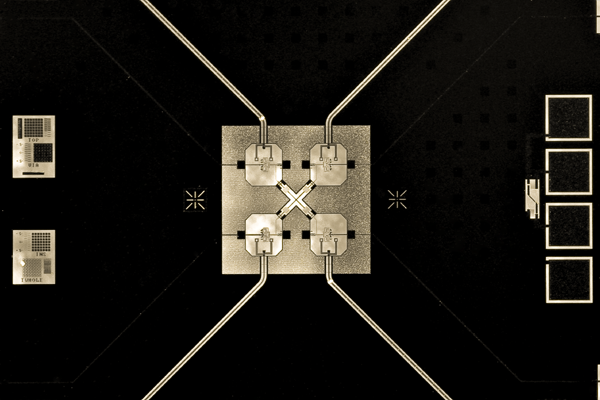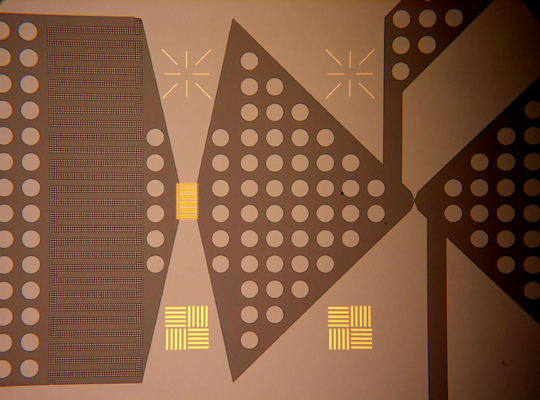superconducting quantum integrated circuits
In the Cleland lab, we are developing superconducting quantum integrated circuits for applications in quantum computation and quantum simulation. These circuits rely centrally on the physics of the Josephson junction, implemented primarily in a variant of the transmon qubit. We have also done extensive experimentation using the Josephson phase qubit.
Josephson qubits have typical ground-excited state energy splittings in the few GHz range, with qubit control provided by external tuning of the qubit splitting as well as using controlled classical microwave signals at the splitting frequency. Qubits are coupled together using capacitive or inductive coupling elements, or via superconducting resonators (see below). Circuits are designed and built using standard semiconductor processing technology, and then tested at mK temperature using a dilution refrigerator.
Superconducting qubits are appealing for engineering quantum integrated circuits because of their intrinsically low loss, their relatively simple fabrication and ease of operation. Superconducting qubits now can achieve quite long coherence times, with both T1 and T2 in the tens of microseconds range, corresponding to a few hundred gate operations. We are continuing to develop better materials, processing, and circuit engineering to improve these basic figures of merit. We have built circuits comprising of up to nine coupled qubits; demonstrated the factoring the number 15 using Shor's algorithm; generating a five-qubit GHZ state; and shown a bit-flip error detection circuit.
Presently, we are focusing our research efforts on developing these devices for testing concepts in quantum communication in addition to quantum computing.

photo e.lucero


